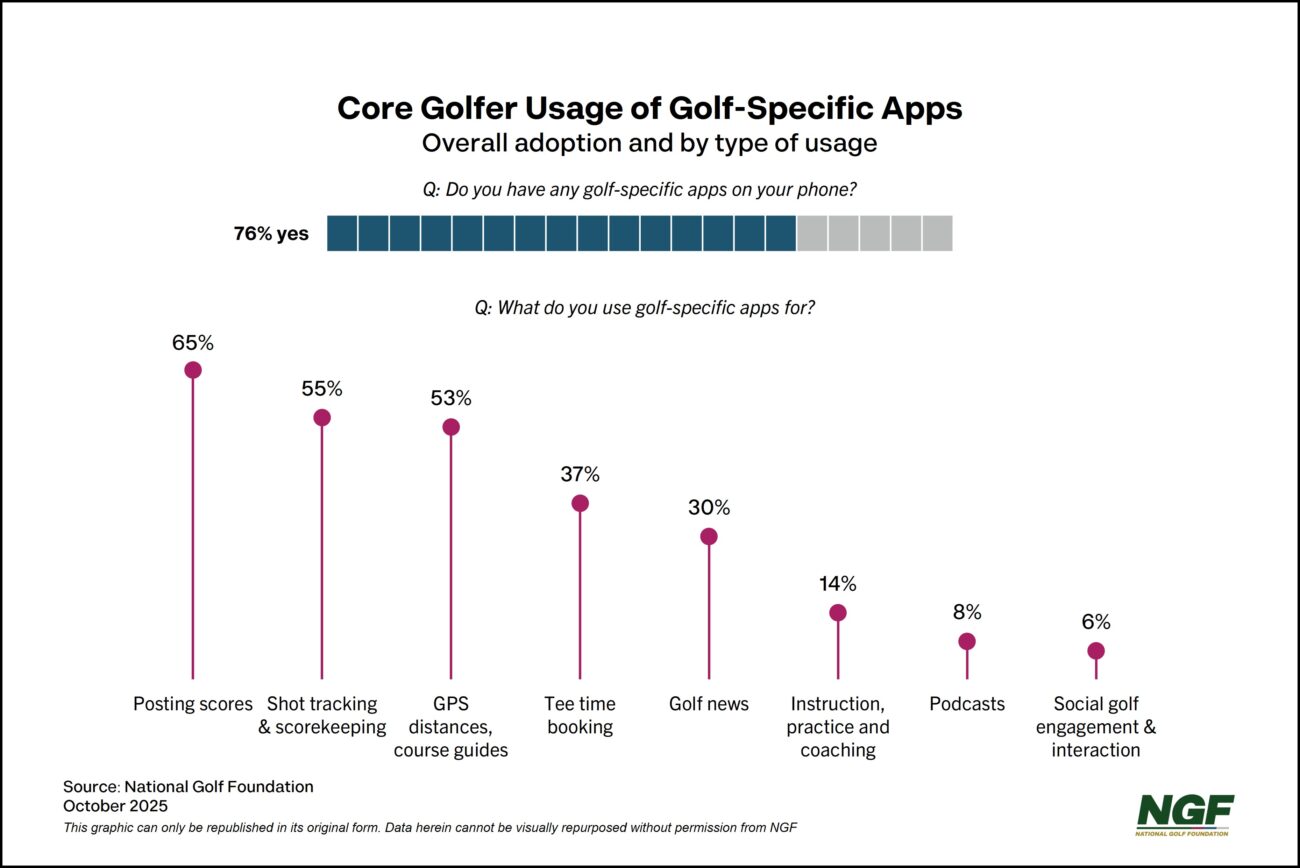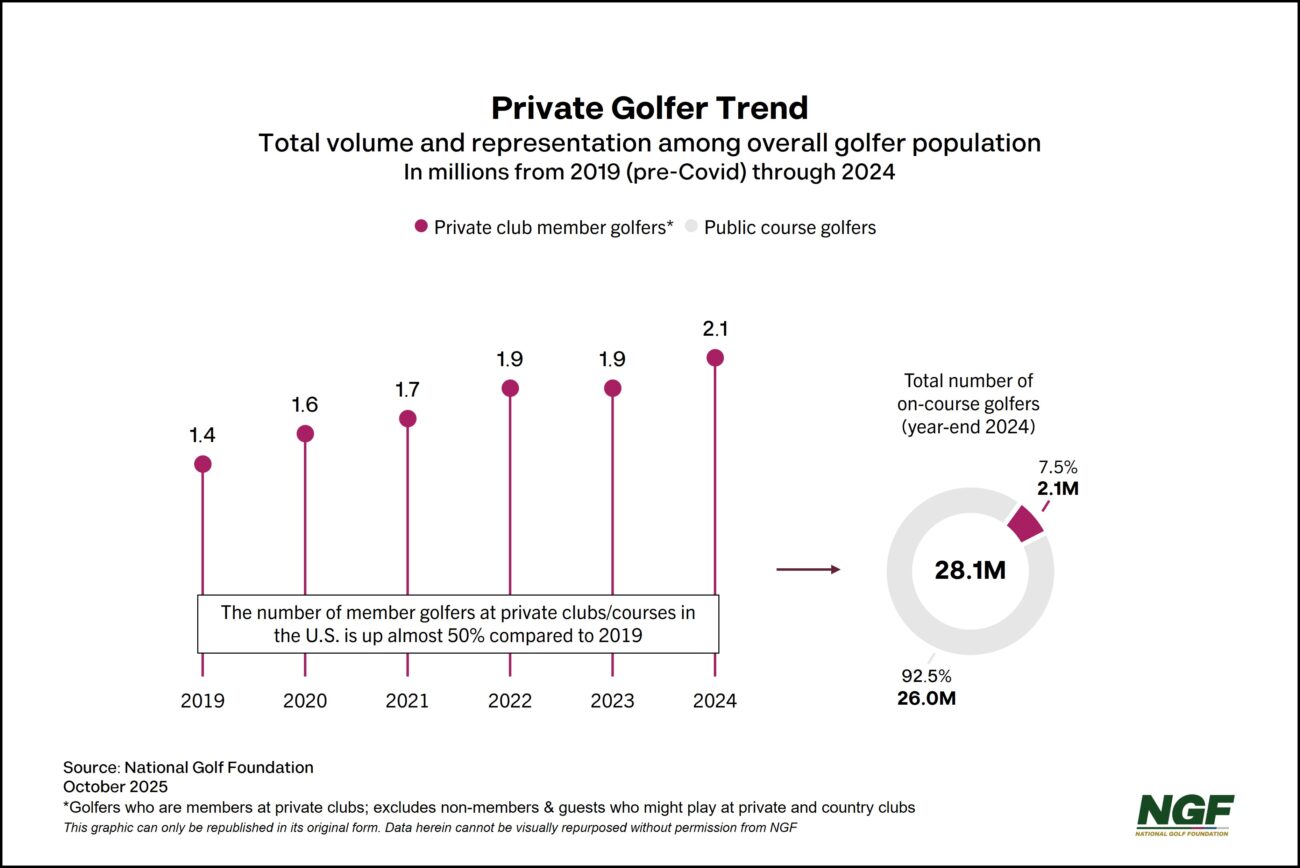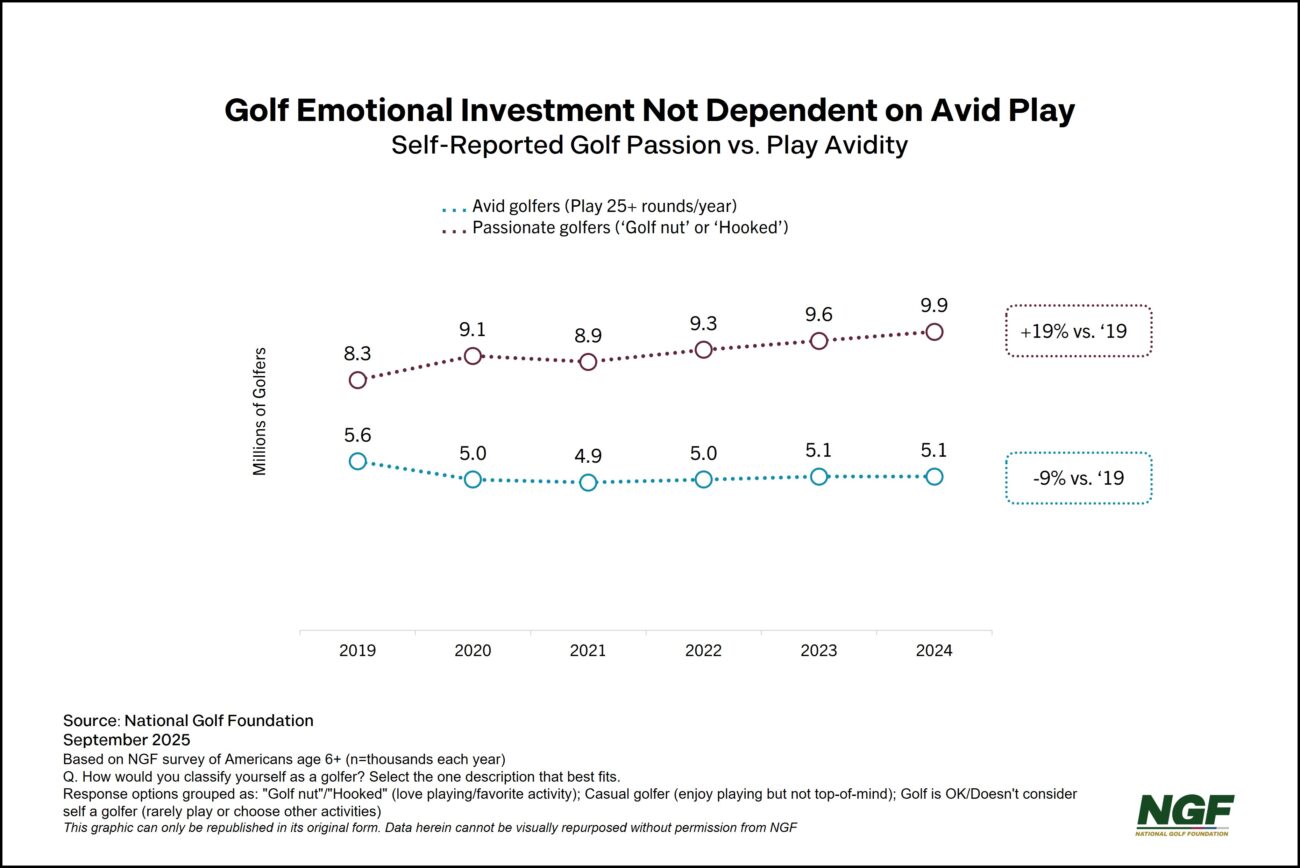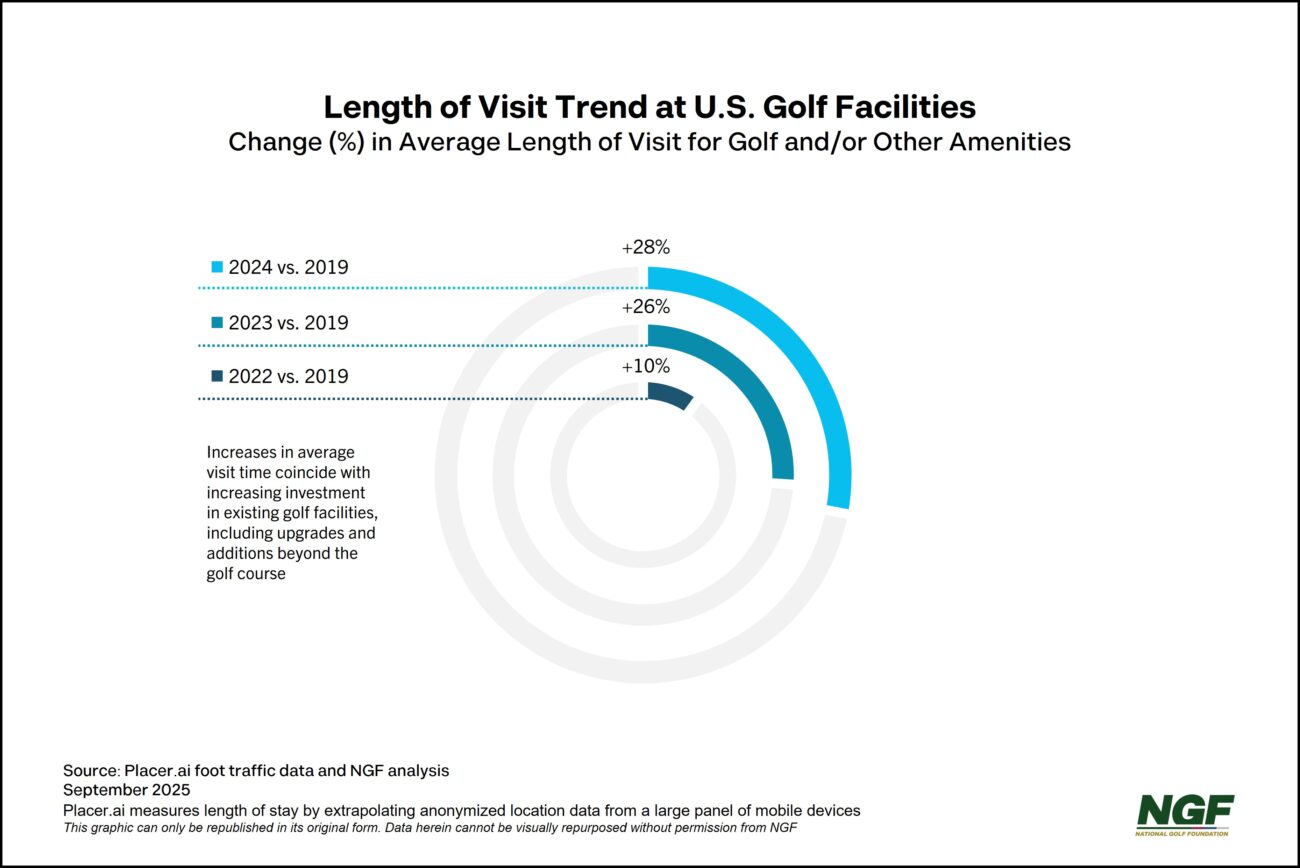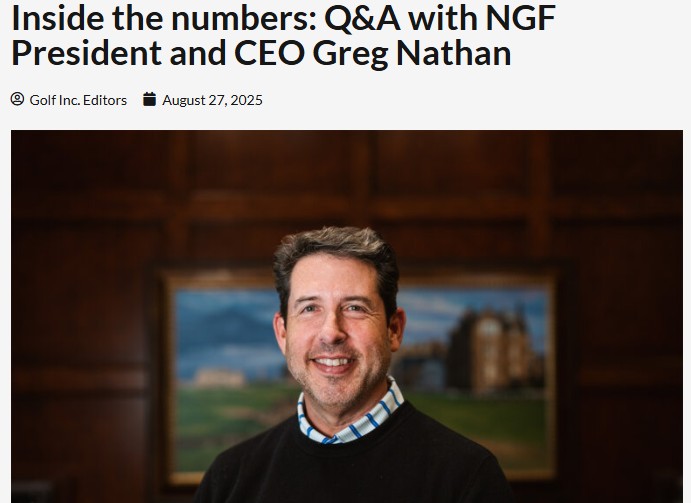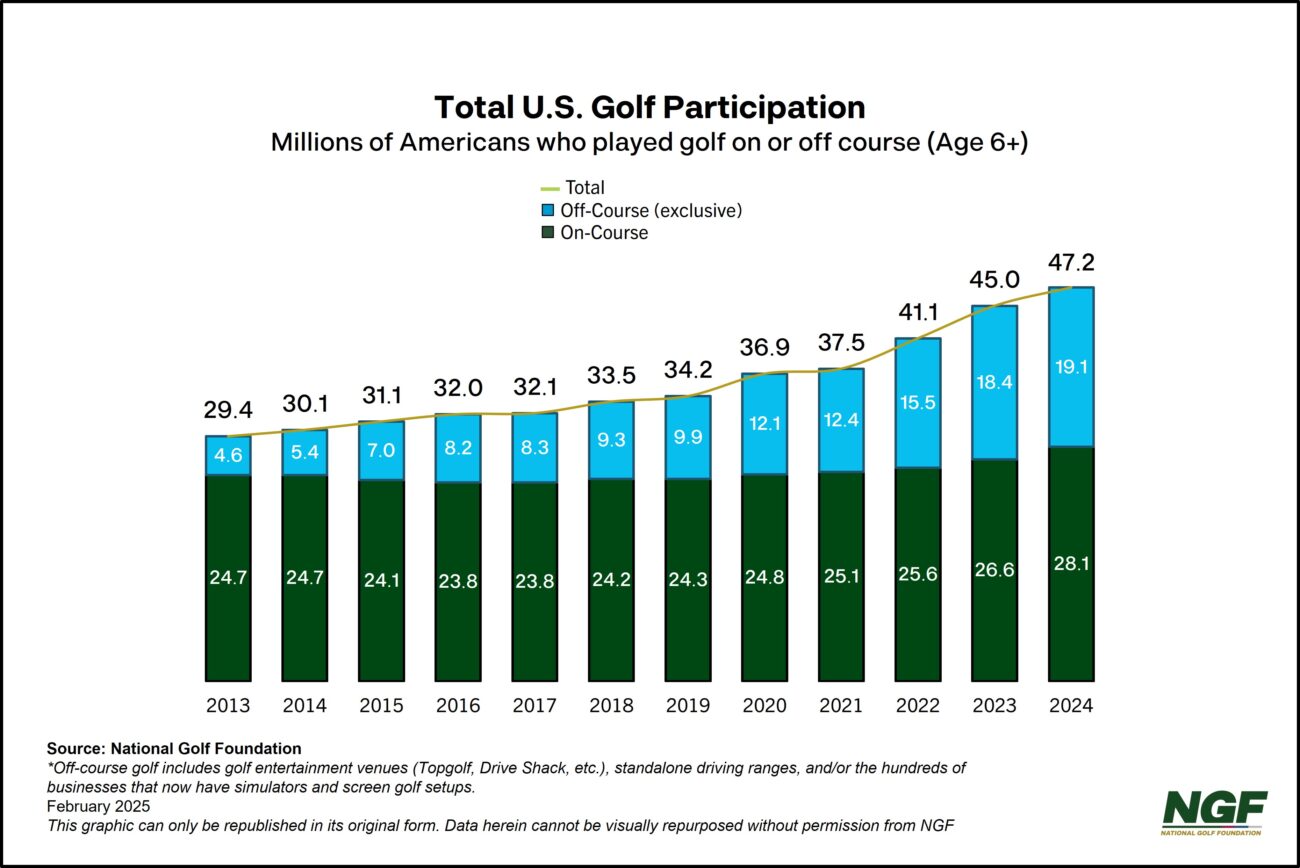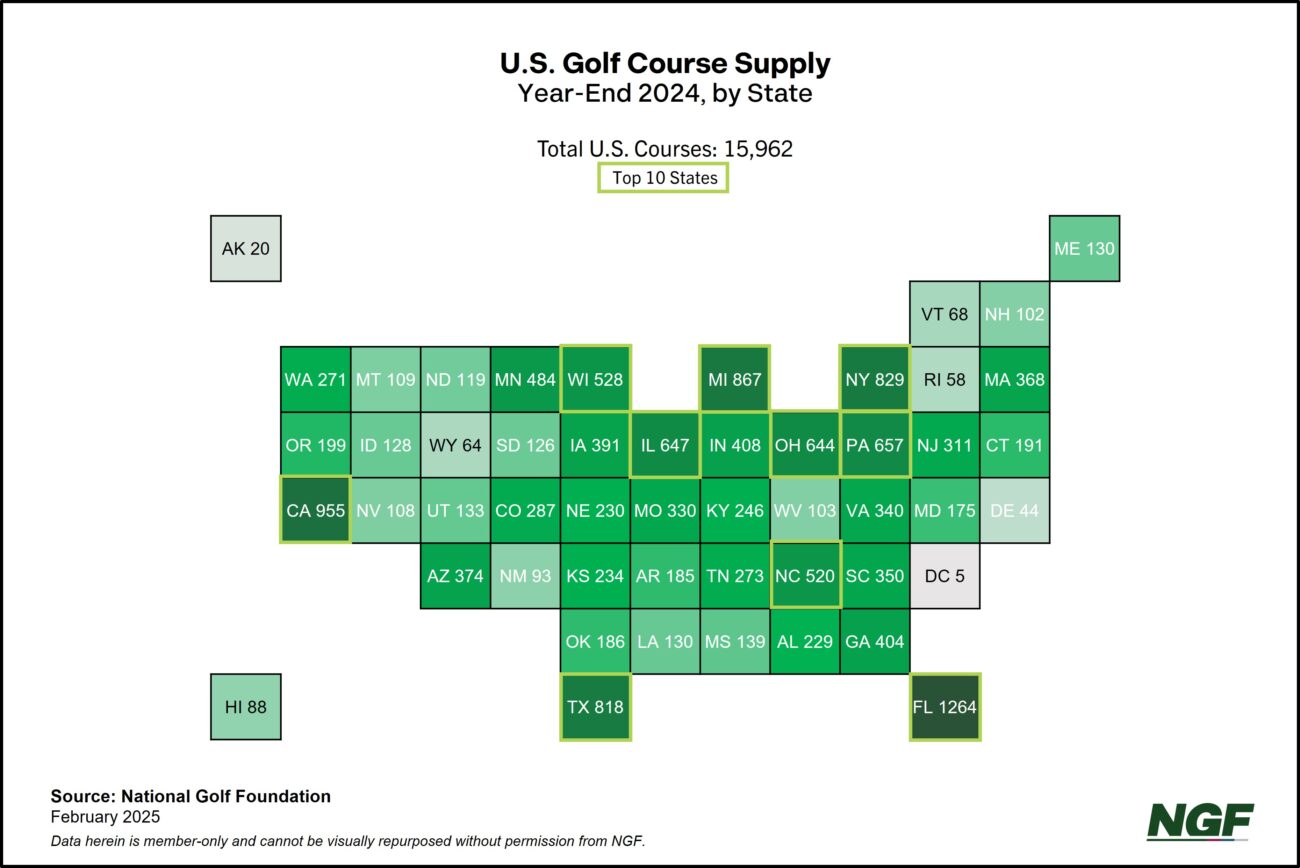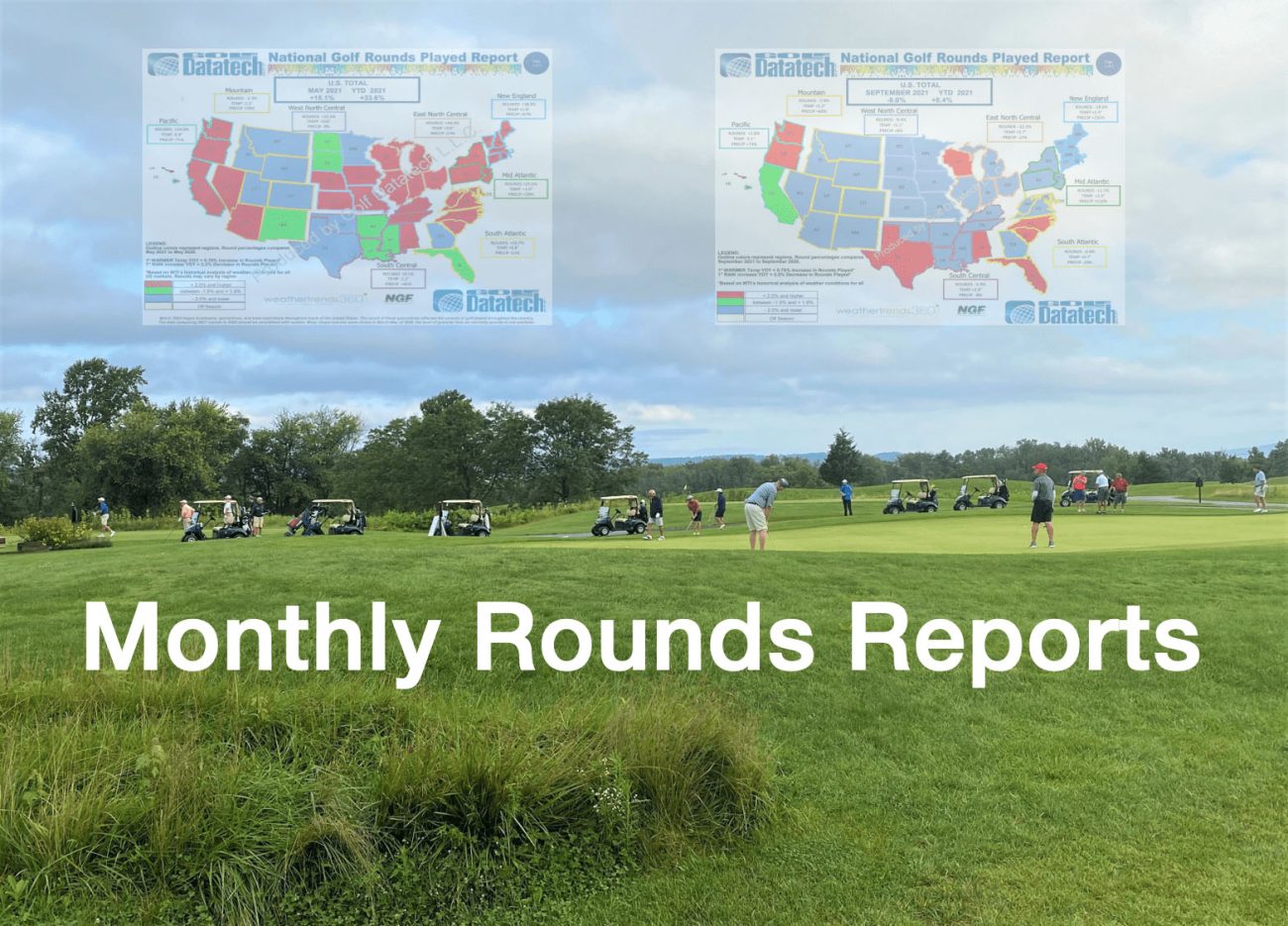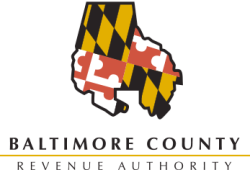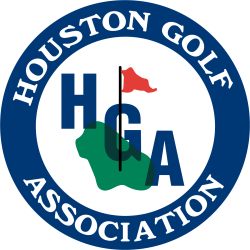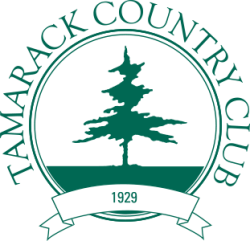As the traditional game continues to modernize and evolve, mobile apps are an increasingly important part of the golf experience, on and off the course. More than three quarters of Core golfers say they use golf-specific apps, with the most notable recent increases in usage coming in several main areas.
Private club golfers account for less than 8% of golf's green-grass participation base, but this group plays and spends more on the game and is a popular target market audience for businesses inside and outside the golf industry.
Whether temporarily or otherwise, golf has captured the global zeitgeist. So, what are the notable differences when it comes to golfers in the current era? For one, the number of golfers who place themselves on the highest level of NGF’s ‘passion scale’ has grown nearly 20% since the pandemic.
Golfers aren’t just playing more, they’re also spending more time at golf facilities in general. As golf courses continue to position themselves as destinations beyond on-course golf – from practice and retail offerings to additional amenities and broader food & beverage offerings – the average length of stay has increased significantly compared to the pre-Covid era.
The recent rise in private golf development is a notable departure from the current U.S. supply landscape, as more than half of new courses under construction or in-planning are private clubs. The current trajectory is attributable to a multitude of factors, both economic and societal, but is representative of a more measured and targeted approach than the industry experienced in the 1990s and into the early 2000s.
August rounds of golf saw the biggest year-over-year jump of any month this year, pushing the industry slightly ahead of the record-setting play pace set in 2024.
NGF research shows the majority of golf course operators are aware of the opportunity cost of 6 million phone hours, but only a small percentage have actually implemented technology solutions to minimize waste, with a fraction more exploring their options. This gap points to a competitive advantage opportunity for operators willing to act.
Buoyed in part by play at private clubs, rounds jumped in July and put 2025 almost on the same pace as last year's record-setting trajectory. It bears noting that July is traditionally the highest-volume month of the year when it comes to rounds-played.
The U.S. golf market continued its march toward equilibrium at the midway point of 2025, with supply and development patterns reinforcing trends that emerged in 2024 and previous years.
Rounds of golf for June -- one of the most high-volume months for play -- were virtually unchanged from a year ago, as the U.S. market remained within striking distance of the record-setting rounds pace of 2024.
Municipal golf is in a unique place. On one hand, there are high-profile examples of popular muni facilities on the proverbial chopping block due to land values. On the other, there are well-backed efforts to preserve and restore some of the game's most historic properties. Municipal facilities are typically where golf is most affordable and accessible to people of all demographics, and there's greater attention on their impact today given the sport's renaissance.
Subscribe to receive 3-minute insights... free!
Why Join the NGF?
The NGF has the leading research and business services team in golf, providing you and the industry with the most accurate and latest golf business data and trends.
With proven success in market analysis, sales analytics, direct marketing, and consulting services available, the NGF offers a variety of services than can help you.
The NGF is supported by individuals and companies from every corner of the golf industry, making possible our research, and grow the game and educational initiatives, like Welcome2Golf.
Need Help?
Answers to the most frequently asked questions about the NGF and the benefits of membership.

Monika “Moe” Baldwin
(561) 354-1617

Madison Myers
(561) 354-1632

